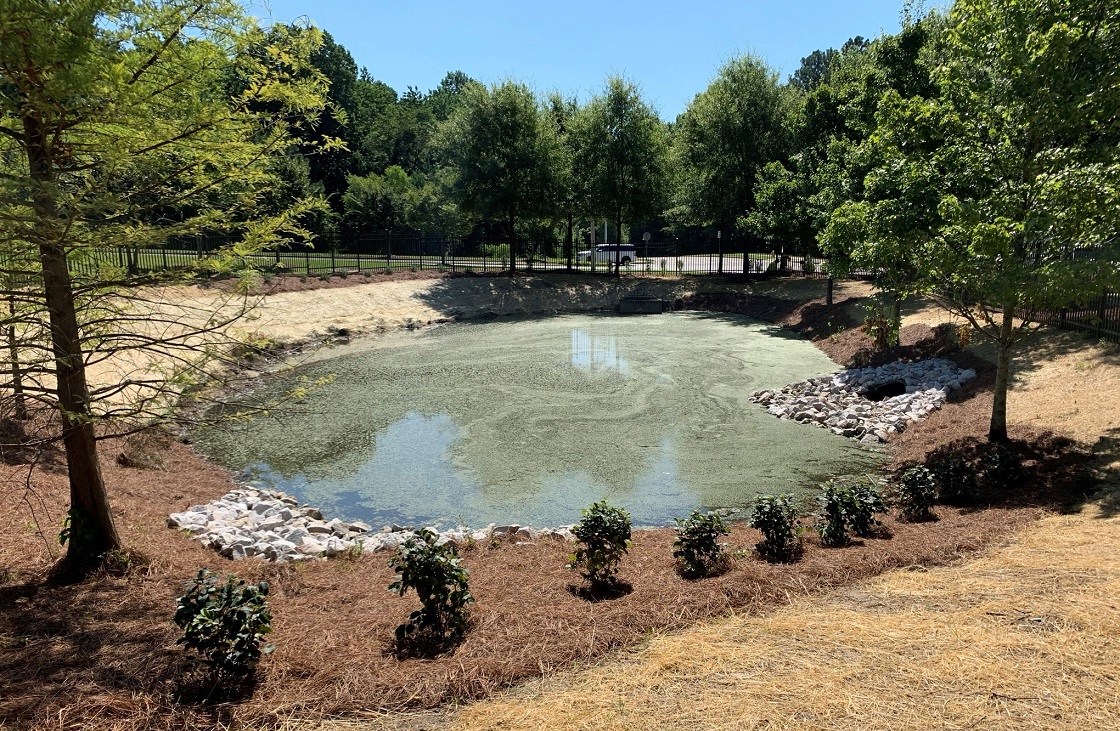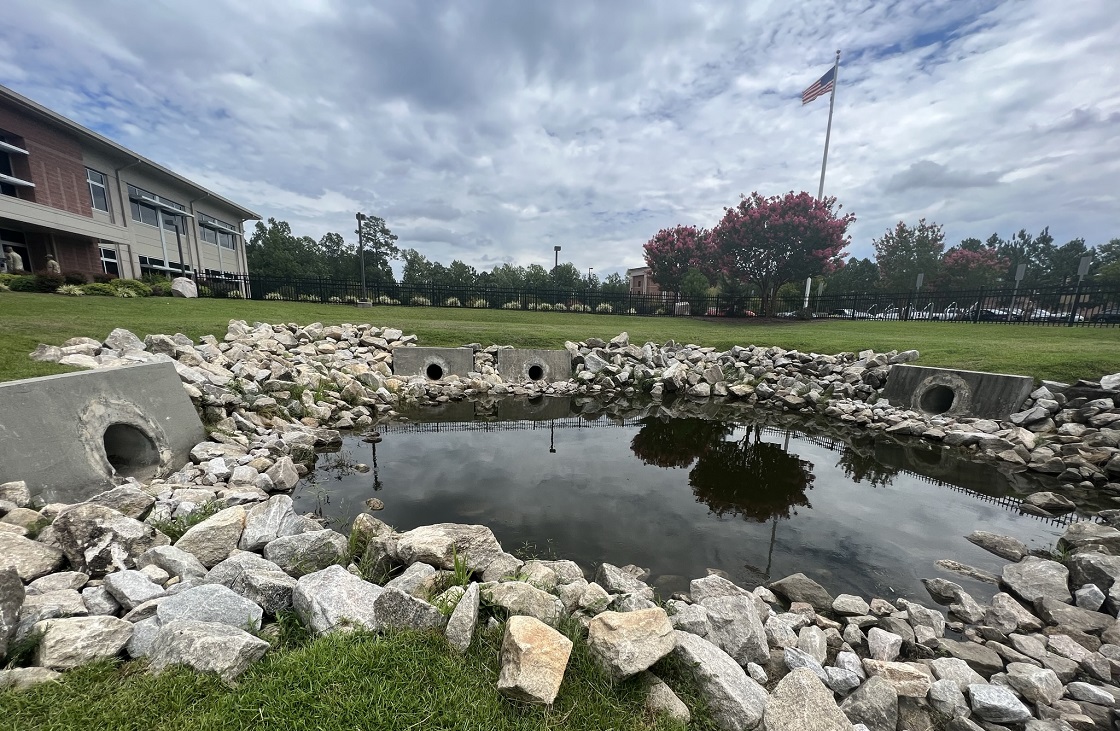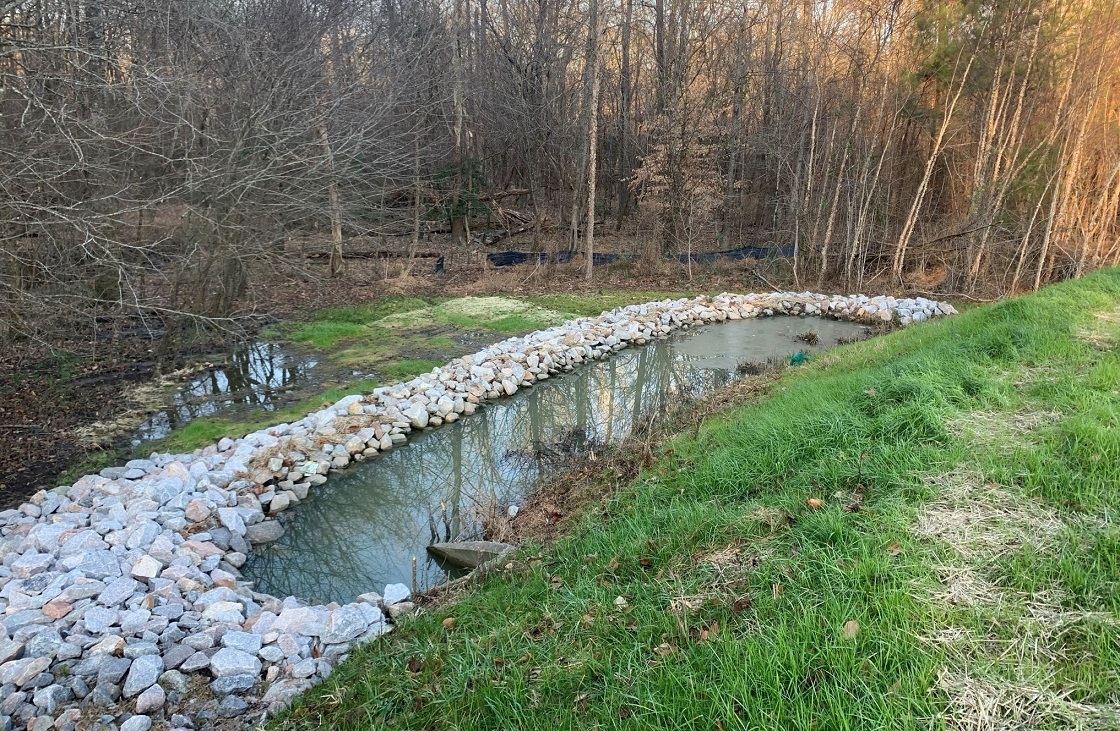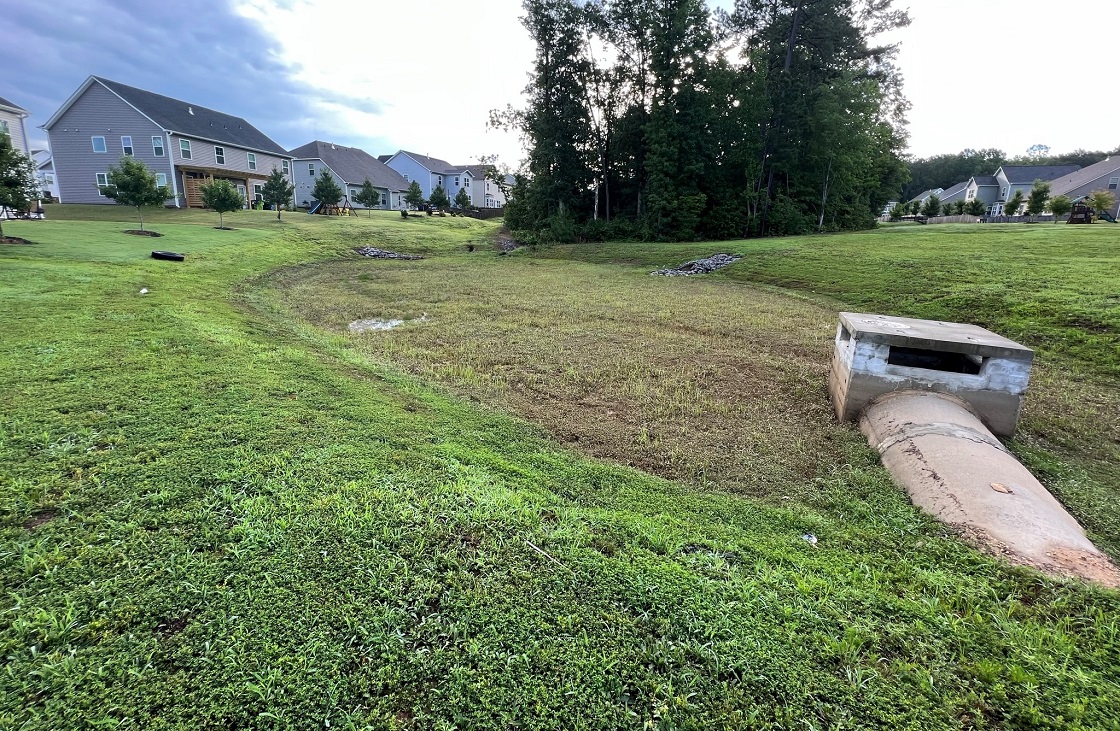The purpose of stormwater management is to protect, maintain, and enhance public health, safety, and general welfare by establishing minimum requirements and procedures to control the adverse effects of increased stormwater runoff associated with land development within the Town. Proper management of stormwater runoff will minimize damage to public and private property, ensure a functional drainage system, reduce the effects of development on land and stream channel erosion, assist in the attainment and maintenance of water quality standards, and facilitate economic development by mitigating associated flooding and drainage impacts.
New Development
For new development within the Town's corporate limits, projects resulting in a disturbance of greater than 1 acre will be required to comply with the requirements of Chapter 9.4 of the Town's Unified Development Ordinance.
Minimum Requirements
- Flow velocities from a stormwater discharge control facility shall comply with the “North Carolina Sedimentation Pollution Control Act of 1973”.
- Stormwater discharge control facilities shall reduce post-development runoff rates to pre-development runoff rates for the 1-year, 24-hour design storm, the 2-year, 24-hour design storm, and the 10-year, 24-hour design storm.
- Stormwater discharge control facilities shall provide sufficient storage volume to retain on-site the runoff from the first inch of rainfall (first flush) for 48 to 72 hours.
- 85% Average Annual TSS: A minimum of 85% average annual removal for Total Suspended Solids
Stormwater Documents for New Development
See the Stormwater Documents Page for required submittal documents, stormwater completion requirements, and operation and maintenance documents.
Stormwater Control Measure (SCM)
SCMs refer to engineered practices designed to remove pollutants from stormwater runoff, reduce downstream erosion, provide flood control, and promote groundwater recharge
SCMs may include both structural and nonstructural elements. Natural swales and other natural runoff conduits shall be retained where practicable, but where additional stormwater discharge control is required to satisfy the minimum control requirements, the following measures are examples of what may be used:
- Stormwater detention structures (dry basins)
- Stormwater retention structures (wet ponds)
- Bio-retention areas
- Constructed Wetlands
SCMs should be designed according to the latest version of the NCDEQ Stormwater Design Manual.





